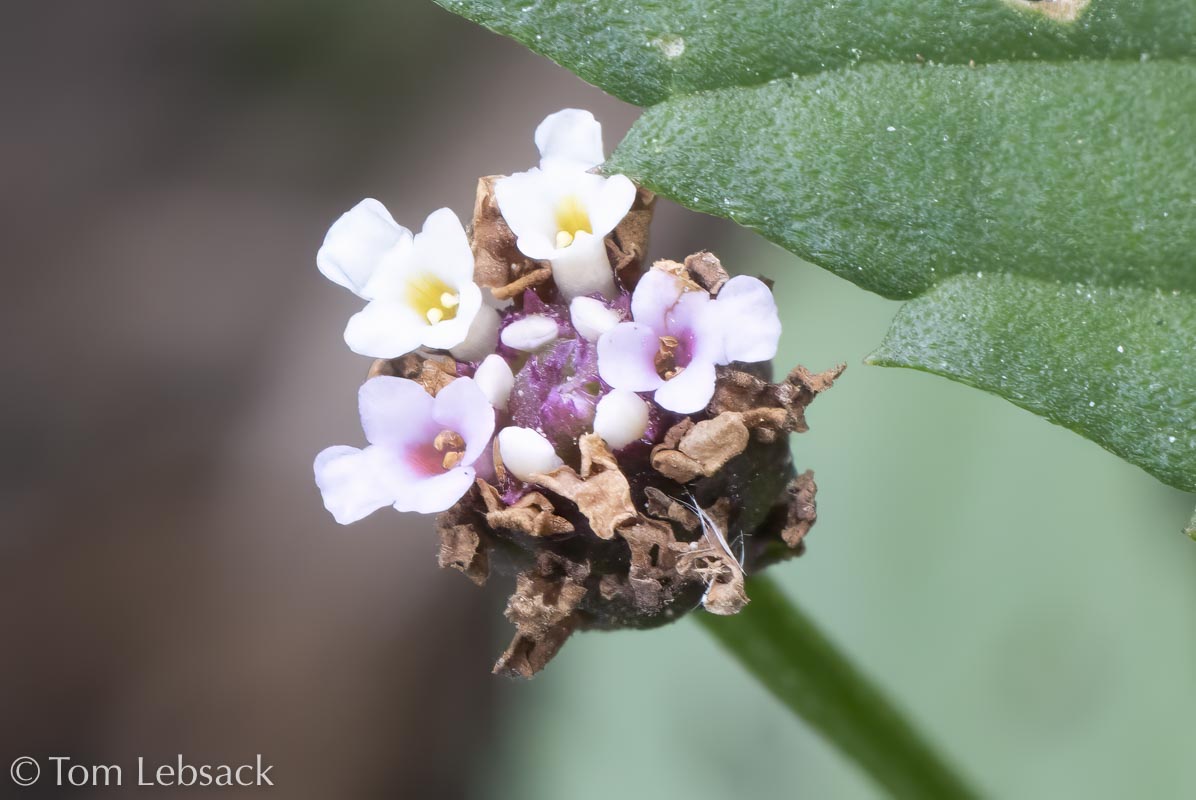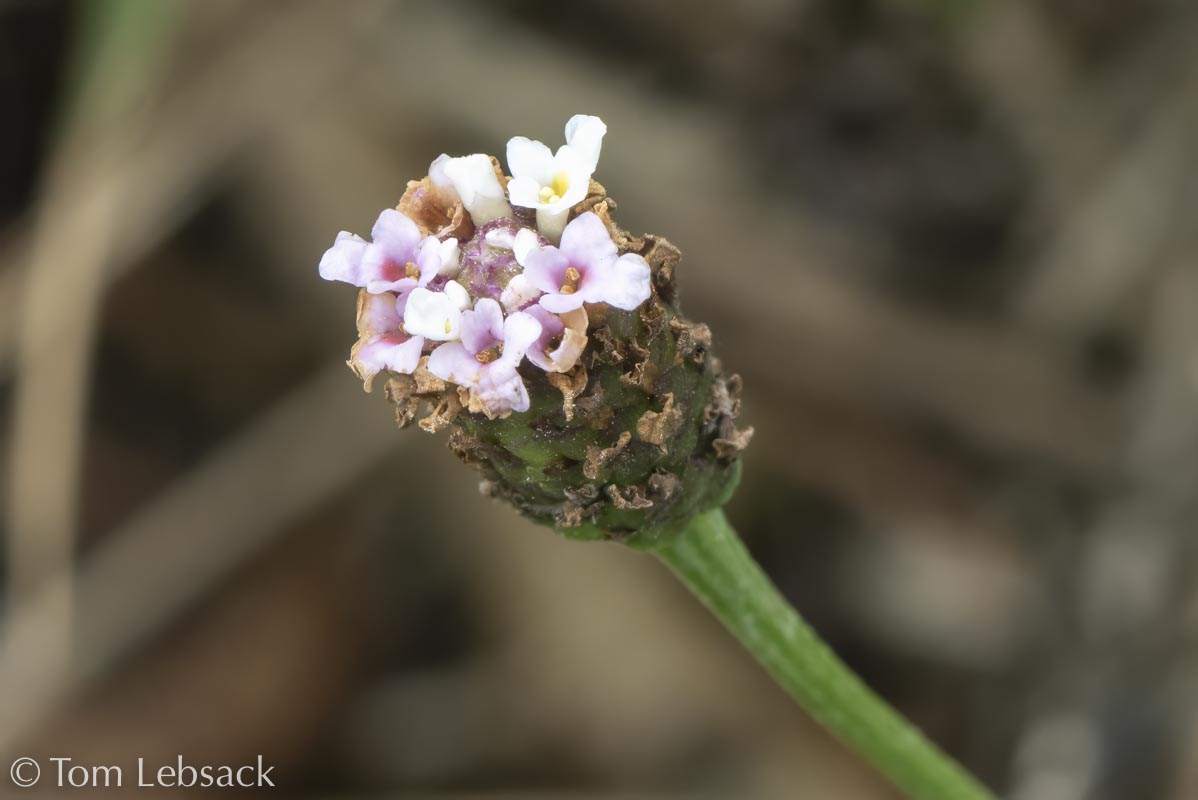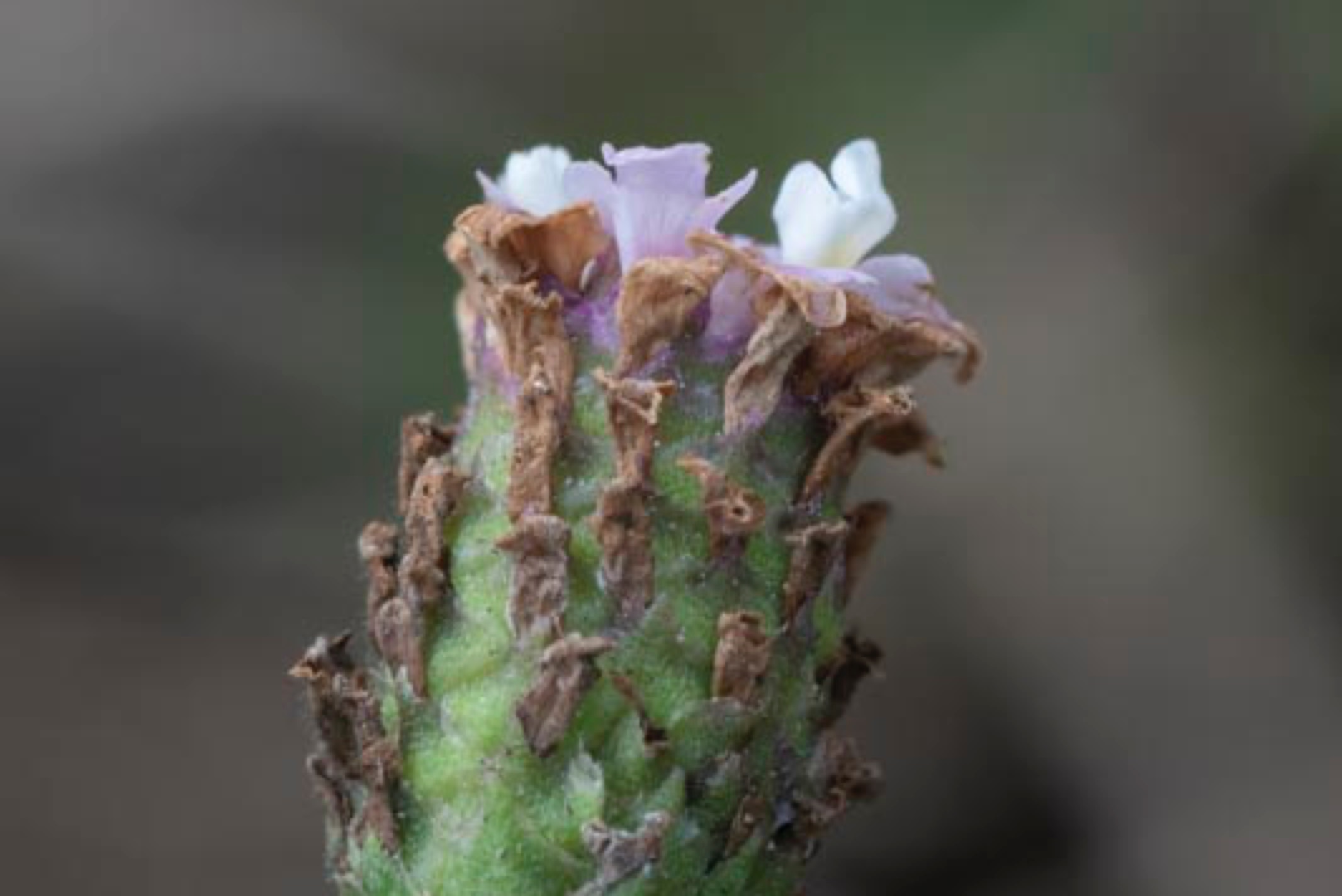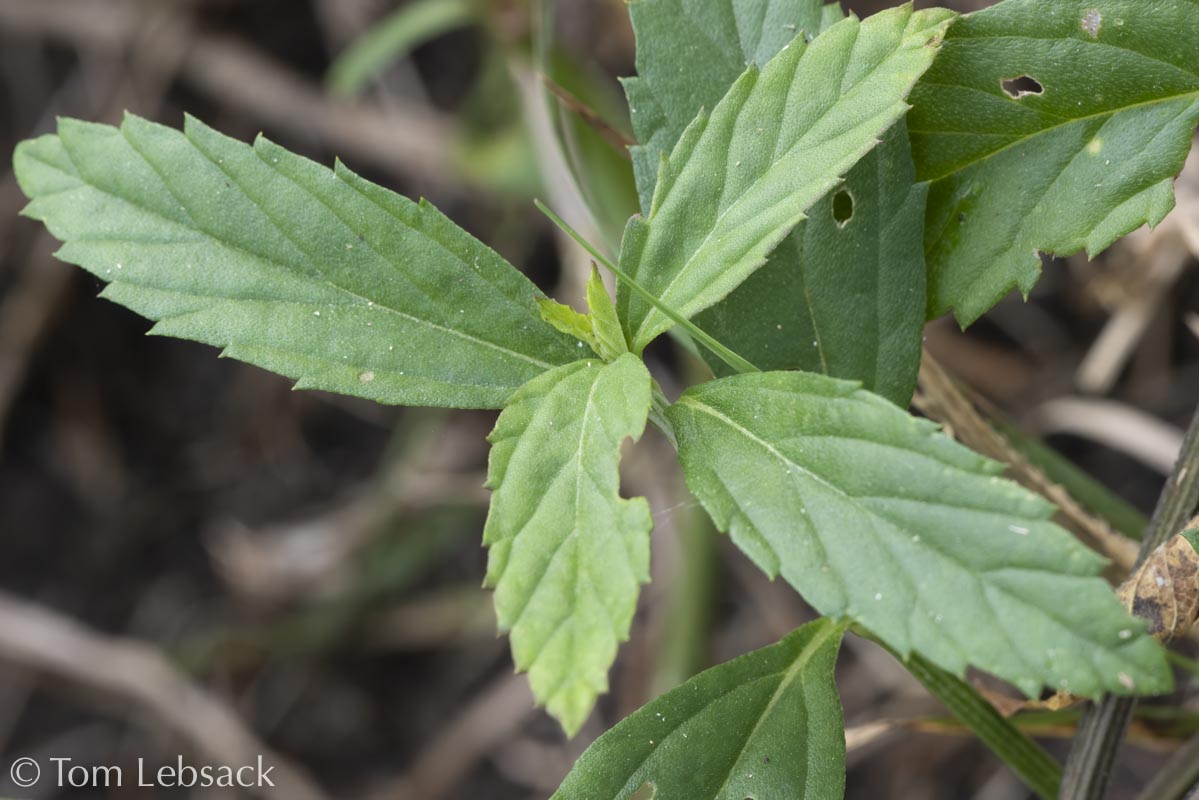Texas Wildbuds
Phyla lanceolata
(Northern Frog-fruit)
| Scientific Name | Phyla lanceolata | USDA PLANTS Symbol | PHLA3 |
| Common Name | Northern Frog-fruit, Lanceleaf Frog-fruit | ITIS Taxonomic Serial No. | 32196 |
| Family | Verbenaceae (Verbena) | SEINet Reference |
Click Here |
| Description | Habitat: Moister soils in river bottoms, lake shores and marshes. Plant: Perennial with ascending or sprawling stems up to 24 inches long, often rooting at leaf nodes. Leaves: Bright green opposite, oblong-lanceolate to ovate blades 0.7 to 3 inches long and 0.2 to 1.2 inches wide, tapering at both ends, with serrate margins from the tips to below the middle; conspicous veins on lower surfaces, especially; short petioles. Inflorescense: Heads are initially spherical growing to cylindrical, 1.4 inches long and borne on peduncles up to 3.5 inches long arising from leaf axils; small flowers in a ring around a purplish cone, each about 0.2 inches across with 4 irregular lobes, the lower lobe larger than the upper; white to pink to lavender corollas with dark center; 2 pair of yellow-tipped stamens. Bloom Period: May to October. References: ""Manual of the Vascular Plants of Texas" by Correll and Johnston, Minnesota Wildflowers and SEINet. |
BONAP Distribution Map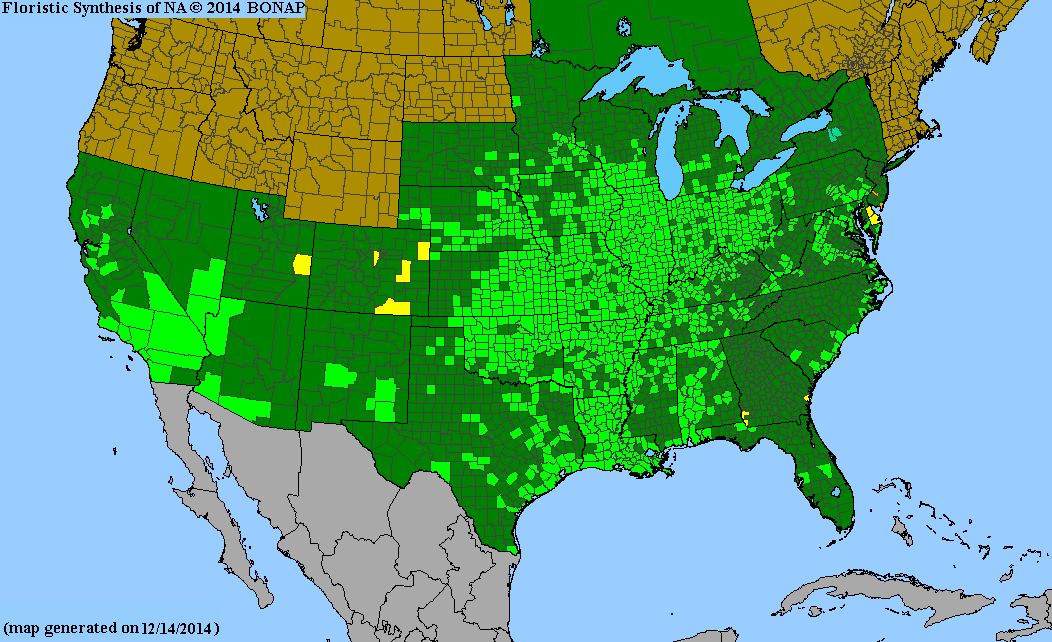 Map Color Key Map Color Key |
Texas Status: Native |
Banner photo of Castilleja indivisa and Lupinus ssp. taken along FM 1323 north of Johnson City, Blanco County
© Tom Lebsack 2025
Every attempt is made to provide accurate, up-to-date, and relevant information, but the completeness or accuracy of any information presented on this website cannot be guaranteed. I use authoritative references to insure high standards of accuracy and review and update the information frequently.
